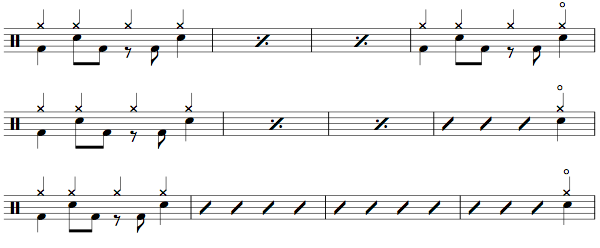I'm starting to chart out some of the covers our band does, and I am wondering how to add small variations to bar repeats e.g. adding an open hi-hat at the end of the 4th bar:

I have seen some charts with annotations to say there should be a fill i.e.:

But I'm wondering if it's okay to add specifics?
Is adding the overrides (if you will) with bar repeats common/acceptable, or should I use rhythm markings and add the variation, e.g. one of the following:

Or should I do something else entirely?
